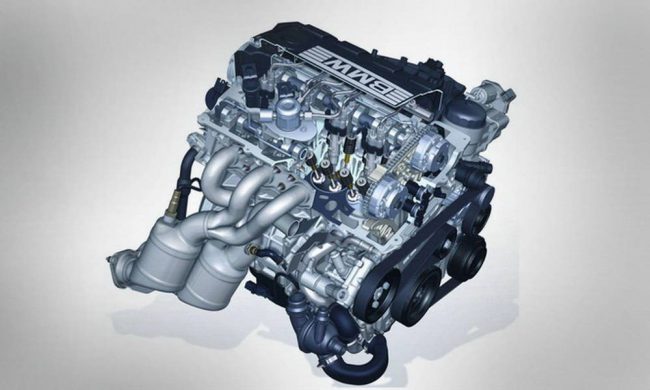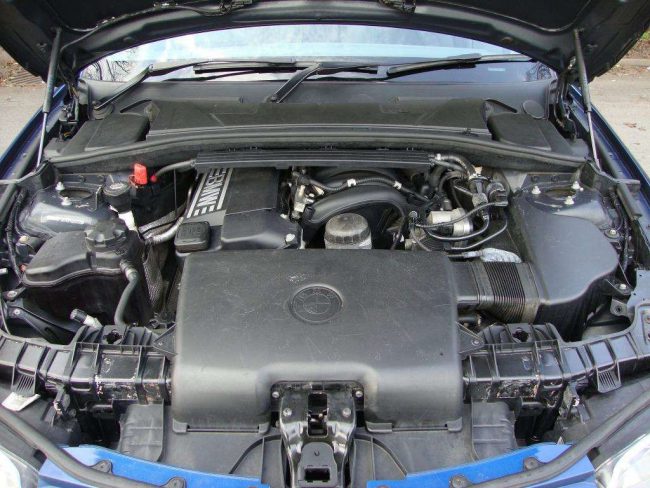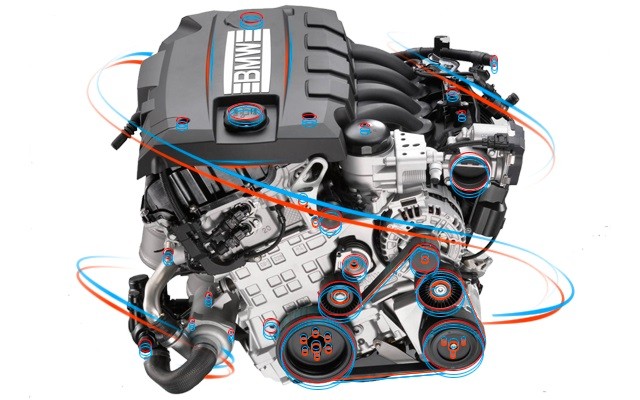
BMW N45B16 engine
Content
The main feature of the BMW N45B16 model is the relative power of the engine, despite the small cubic capacity of the design.
The compactness and low weight of the engine made it possible to adapt the engine to the limited engine compartment of small cars, solving two problems at once: insufficient cooling system efficiency and balanced weight distribution.
BMW 1-Series hatchbacks based on this engine were nimble and agile, despite the shortcomings of the body structure.
Brief history: the birth and popularity of the famous engine
 The BMW N45B16 model was designed on the basis of the N45 engine and is an upgraded version of the previous generation. The installation of the motor for conveyor production was scheduled at the beginning of 2003, however, due to the increase in the compactness of the design, the developers decided to postpone full-scale production until 2004.
The BMW N45B16 model was designed on the basis of the N45 engine and is an upgraded version of the previous generation. The installation of the motor for conveyor production was scheduled at the beginning of 2003, however, due to the increase in the compactness of the design, the developers decided to postpone full-scale production until 2004.
Long development provided the motor with great popularity at the beginning of the 21st century: a 4-cylinder in-line engine with a volume of 1596 mm produced power up to 85 kW, which corresponded to 115 horsepower. The engine coped well with the load at low speeds and had increased torque, which together provided high traction.
The main disadvantage of the BMW N45B16 model is the dependence on fuel - the power unit only runs on high-octane gasoline. The use of fuel below class A95 leads to strong detonation shocks, which negatively affects the operational life of the structure. Most of the model range failed from piston locking or valve damage - breakdowns that arose from low-grade quality at high engine speeds.
BMW N45B16 were installed only on the first generation of E81 and E87 hatchbacks due to their compact volume - other cars were not equipped with these engines from the factory.
This is interesting! Since 2006, manufacturers have strengthened the design of the BMW N45B16, increasing the strength of the engine and increasing the volume of working chambers to 2 liters, images of the next generation of the model - N45B20S. The new version was a sports assembly and was produced in a limited edition on the BMW 1 series of the maximum configuration.
Technical specifications
A distinctive feature of this motor from its predecessor N42B18 was the reduction of the crankshaft, which provides a shorter piston stroke, as well as the installation of upgraded versions of the piston system and connecting rods. The cylinder head of the engine received a modified cover, and the modernization of the design of the power unit in the direction of increasing torque forced the installation of new candles and a generator.
| Supply system | Injector |
|---|---|
| Number of cylinders | 4 |
| Valves per cylinder | 4 |
| The piston stroke, mm | 72 |
| Cylinder diameter, mm | 84 |
| Compression ratio | 10.4 |
| Engine power, hp / rpm | 116/6000 |
| Torque, Nm / rpm | 150/4300 |
| Environmental standards | Euro 4-5 |
| Engine weight, kg | 115 |
The VIN number of the motor is located on the front of the power unit in the center of the device. Also, when buying an engine from the factory, a metal tag is attached to the top cover with data on the date of production and the manufacturer.
The engine runs on A95 fuel and higher, the average consumption is 8.8 liters in the city and from 4.9 on the highway. Oil is used brand 5W-30 or 5W-40, the average consumption per 1000 km is 700 g. The technical fluid is replaced every 10000 km or every 2 years of operation.
It's important to know! The entire engine structure is made of aluminum, which not only reduced the weight of the engine, but also reduced the operational life - aluminum cylinders rarely reached 200 km of run on the factory set.
Weaknesses: what you need to know
 The BMW N45B16 generation is distinguished by a competent design of the structure, which reduced the likelihood of breakdowns to a minimum. These engine models quietly lived up to the passport resource, after which they needed a complete overhaul: from replacing valves and cylinder housings to installing new crankshafts. Until the end of the operational life, the owners of the motor could only be disturbed by:
The BMW N45B16 generation is distinguished by a competent design of the structure, which reduced the likelihood of breakdowns to a minimum. These engine models quietly lived up to the passport resource, after which they needed a complete overhaul: from replacing valves and cylinder housings to installing new crankshafts. Until the end of the operational life, the owners of the motor could only be disturbed by:
- Extraneous sounds in the engine - the malfunction consists in stretching the chain or incapacitating the timing tensioner. The problem occurs every hundred kilometers - you will have to change the chains at least twice;
- Excessive vibration loading - large vibrations are observed at idle, which is explained by the design features of the Vanos system. The situation is corrected by regular cleaning of components and the use of high-quality fuel;
- Overheating and detonation - engine failure is possible even when using an oil analogue recommended by the manufacturer. In order to prevent costly engine repairs on the quality of technical fluids, it is not recommended to save.
Regular replacement of components and timely diagnostics will keep the BMW N45B16 in a functional state until the end of the resource. With careful use, this motor will please with reliability and reliability.
Conclusion
 This power unit is the best choice between price and production quality - the budget assembly according to German standards has ensured the high popularity of the motor up to the present time. Low fuel consumption, high repairability and increased traction are a good investment: a car based on the BMW N45B16 will please the owner for more than one year, but finding suitable components will be very problematic.
This power unit is the best choice between price and production quality - the budget assembly according to German standards has ensured the high popularity of the motor up to the present time. Low fuel consumption, high repairability and increased traction are a good investment: a car based on the BMW N45B16 will please the owner for more than one year, but finding suitable components will be very problematic.
Special attention should be paid to the possibility of tuning. The BMW N45B16 engine does not withstand artisanal refinement - flashing electronic equipment and replacing intake-exhaust systems with a sports-type variant will increase the power potential to 10 horsepower. The remaining improvements will only lead to a decrease in the operational resource.

